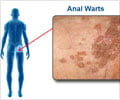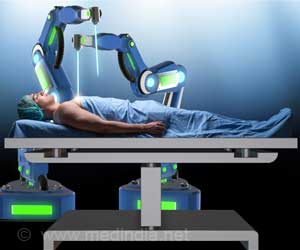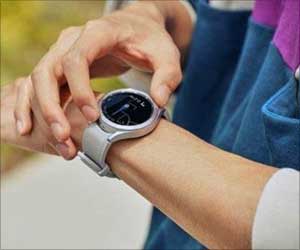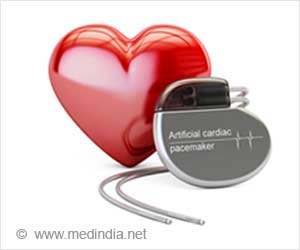
‘Smartphone-based sensors can provide real-time surveillance (monitoring) of infectious diseases at household level. This data can then be evaluated connected to a mobile phone application for the surveillance of influenza-like illness (ILI).’
Tweet it Now
"Using simple forecasting models, we showed that thermometer data could be effectively used to predict influenza levels up to two to three weeks into the future. Given that traditional surveillance systems provide data with a lag time of one to two weeks, this means that estimates of future flu activity may actually be improved up to four or five weeks earlier."Miller and senior study author Philip Polgreen, MD, UI associate professor of internal medicine and epidemiology, analyzed de-identified data from the commercially available Kinsa Smart Ear Thermometers and accompanying app, which recorded users' temperature measurement over a study period from Aug. 30, 2015 to Dec. 23, 2017.
There were over 8 million temperature readings generated by almost 450,000 unique devices. The smart thermometers encrypt device identities to protect user privacy and also give users the option of providing anonymized information on age or sex. Readings were reported from all 50 states and were aggregated to provide region and age-group specific flu activity estimates.
Inder Singh and Erin Koehler at Kinsa, Inc., the company that makes and sells the smart thermometers, were also part of the study team. They conceived and designed the Kinsa products for purposes of tracking the spread of illness, and provided full access to de-identified data for Miller and Polgreen to independently analyze. Neither Miller nor Polgreen have a financial relationship with Kinsa, Inc.
Smart thermometers provide real time data to track flu activity
Advertisement
Current forecasts rely on this CDC data, but even at its fastest, the information is almost two weeks behind real-time flu activity. The UI study showed that adding thermometer data, which captures clinically relevant symptoms (temperature) likely even before a person goes to the doctor, to simple forecasting models, improved predictions of flu activity. This approach accurately predicted influenza activity at least three weeks in advance.
Advertisement
Knowing that flu activity is about to increase in a community may also prompt individuals to get a flu shot, stay home from work when they get sick, and seek medical help if their illness worsens.
Smart thermometers can provide a way to estimate which age groups are being most affected during a flu season
Miller notes that the smart thermometers also provide a way to estimate which age groups are being most affected during a flu season, using de-identified data.
"Because the device gives users the option of voluntarily reporting anonymized information on sex and age, we were able to estimate age-group specific incidence," he says. "Our results also suggest that influenza-like-illness moves more frequently from children to adults rather than vice-versa."
Monitoring the duration of fever from the smart thermometer readings also revealed that fevers occurring during flu season were more likely to last three to six days and much less likely to last only one day.
Fevers lasting even or more days were not at all seasonal. The data also identified instances where users had fever that went away for a few days and then returned. The researchers believe this so-called "biphasic" fever pattern may reflect more serious illnesses.
The second temperature spike can indicate a secondary bacterial infection like pneumonia that sets in after the flu and can lead to more severe health problems, especially in older individuals.
"Being able to track the duration of fevers and the return of fevers could help us learn more about an influenza season as it is emerging and possibly provide information about other infections, including new emerging infectious diseases," Polgreen says.
Source-Eurekalert









